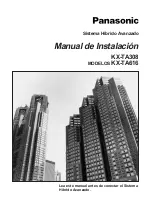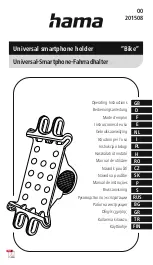
Discharge
Discharge Characteristics
Figure1. Discharge Characteristics
Table 1. Discharge current at stipulated discharge
rates
The curves shown in Figure
and the discharge current
rates shown in Table 3 illustrate the typical discharge
characteristics of Powerline SC at an ambient
temperature of 20 C. The symbol "C"expresses the
nominal capacity of the battery measured at a 20-Hour
discharge rate. Please refer to General Specifications to
determine the nominal capacity rating of specific
Powerline SC models. The standard industry practice to
determine the nominal capacity of a valve regulated
lead acid battery is to discharge the battery under test
at C
and 1.75Vpc.
Table 3 shows the different currents that can be drawn
at various discharge capacity rates.
Table 4 shows that the rated nominal capacity of a
battery is reduced when it is discharged at a value of
current that exceeds its 20-Hour discharge rate. This
should be taken into consideration when a battery is
being selected for a particular application.
1
o
20
Table 2. Discharge capacity at various discharge
rates
Temperature characteristics
Over Discharge (Deep Discharge)
Table 3. Final discharge voltage
The dotted line in Figure 1 indicates the lowest
recommended voltage under load, or cut off voltage, for
Powerline SC at various discharge rates. In general, lead
acid batteries are damaged in terms of capacity and
service life if discharged below the recommended cut off
voltages. It is generally recognized that all lead calcium
alloy grid batteries are subject to over discharge damage.
For example, if a lead acid battery were discharged to
zero volts, and left standing in either "on" or "off " load
conditions for a long period of time, severe sulphation
would occur, raising the internal resistance of the battery
abnormally high. In such an extreme case, the battery
may not accept charge. Powerline SC have been designed
to withstand some levels of over-discharge. However,
whilst this is not the recommended way of operation,
Powerline SC can recover their capacity when recharged
correctly. Final discharge voltage is shown in Table 3.
If a battery is to be discharged at a rate in excess of 3C
Amps, please contact us prior to use.
At higher temperatures, the electrical (Ah) capacity of a
battery increases and conversely at lower temperatures,
the electrical (Ah) capacity of a battery decreases.
0.05C 0.10C 0.15C 0.20C 0.25C 0.40C 0.60C 1.0C 2.0C 3.0C
20 Hr.
Capacity
Discharge Current(A,20 C)
o
7
0.35
0.70 1.05
1.4
1.75 2.8
4.2
7.0 14.0 21.0
8
0.40
0.80 1.20
1.6
2.0
3.2
4.8
8
16
24
12
0.60
1.20 1.80
2.4
3.0
4.8
7.2
12 24
36
18
0.90
1.80 2.70
3.6
4.5
7.2
10.8 18 36
54
7.5
0.375 0.75 1.125 1.5 1.875 3.0
4.5
7.5 15 22.5
20 Hr.
Capacity
Discharge Current(A,20 C)
o
TO 1.75V/C TO 1.75V/C TO 1.75V/C TO 1.70V/C TO 1.60V/C
20Hr
10Hr
5Hr
3Hr
1Hr
7
0.350
0.651
1.180
1.865
4.410
7
8
0.400
0.745
1.374
2.128
5.040
12
0.600
1.116
2.057
3.197
7.560
18
0.900
1.674
2.978
4.688
11.340
.5
0.375
0.698
1.287
2.020
4.775
3C
2C
1C
0.25C
0.17C 0.019C
0.6C
0 . 0 5 C
Min
Discharge time
Hr
1
2
3
5
10
20 30
60
2
3
5
10
20 30
T
e
rminal
V
o
ltage
13.0
12.0
11.0
10.0
9.0
8.0
7.0
6.5
6.0
5.5
5.0
4.5
4.0
3.5
v/6v
v/12v
POWERLINE
SC
SERIES
04
Discharge
Discharge current
(Ampere)
Final discharge voltage
(V/c)
I
0
≤0.2 C
20
0.2 C ≤
0.5
C
0
I<
0
20
20
0.5 C ≤
1.0 C
0
I<
20
20
1.0C ≤
20
I
1.75
1.70
1.65
1.60

































